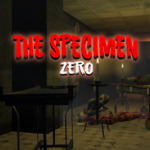Pacing and Scares in R.E.P.O.: A Deep Analysis of Tension, Timing, and Terror in Indie Horror Gaming
R.E.P.O. is an indie horror game that has recently captivated fans of psychological and survival horror with its unique atmosphere, tight level design, and masterful use of pacing and scares. This article delves into the mechanics and design philosophy behind the pacing and scares in R.E.P.O., examining how it manipulates fear through environmental tension, timing, sound design, and player psychology. We’ll explore the game’s evolution from introduction to climax, breaking down how its fear structure develops over time, and how it maintains engagement without fatigue. Whether you’re a horror game developer or a fan eager to understand why R.E.P.O. feels so terrifying and immersive, this analysis will shed light on every key aspect of its pacing and scare tactics.
Introduction to R.E.P.O. and the Foundation of Horror Pacing
The pacing and scares in R.E.P.O. are rooted in its minimalistic yet deliberate design. Developed by a small team of indie creators, R.E.P.O. strips away flashy mechanics in favor of suspenseful atmosphere and narrative tension. The game introduces the player to a sterile, haunting world where mystery and unease take center stage from the very first minute.
The early pacing is slow and calculated, allowing players to absorb the unsettling silence and growing paranoia. There are no immediate jump scares—just a feeling of dread that builds as you explore cold corridors and abandoned rooms. This deliberate slow-burn opening establishes a psychological foothold that becomes the foundation for future terror.
Building Atmosphere Through Environmental Storytelling
One of the strengths of the pacing and scares in R.E.P.O. lies in how it uses the environment as a storytelling medium. Rather than dumping exposition through dialogue or cutscenes, the game plants visual clues, audio snippets, and cryptic objects throughout the map to hint at a dark backstory.
Players are encouraged to piece together what has happened in this eerie world. Bloodstains, broken doors, and forgotten belongings suggest recent chaos, and the lack of life makes every step feel heavier. As the environment changes subtly, players realize they’re not alone—and that discovery happens without a single scare. The pacing here is methodical, allowing the fear to creep in organically.
Sound Design: The Heartbeat of Fear in R.E.P.O.
Audio is central to the scares in R.E.P.O. Instead of a constant soundtrack, the game features ambient noise—dripping pipes, mechanical hums, distant footsteps. These aren’t merely background effects; they’re timed to punctuate the silence and create a heightened sense of vulnerability.
R.E.P.O. uses dynamic sound to signal danger, fake-out the player, or create psychological confusion. For example, a sudden door creak might mean nothing—or it might precede a chase. The unpredictability of these cues makes the soundscape one of the most powerful fear tools, perfectly synchronized with the game’s overall pacing.
The First Encounter: Setting the Tone for Scares
R.E.P.O.'s first actual enemy encounter doesn't happen until players are already several minutes deep into the game. This is a crucial pacing choice. By delaying the threat, the game conditions players to feel anxious even when nothing is happening. When the first creature finally appears, the scare hits harder because the silence has stretched for so long.
This early scare isn’t overwhelming but designed to shock and disorient. It also introduces key mechanics—running, hiding, and evading—without feeling like a tutorial. This moment marks the shift from psychological unease to active horror, adjusting the game’s pacing without losing immersion.
Escalation: How R.E.P.O. Intensifies Fear Gradually
The pacing and scares in R.E.P.O. ramp up incrementally. After the first enemy, the game introduces additional threats, more aggressive behavior, and environmental hazards. Importantly, it does so slowly and with purpose, ensuring that fear doesn’t devolve into frustration.
Each level or zone introduces new variations of danger. Players may face different monster behaviors, malfunctioning security systems, or timed escape scenarios. The pacing avoids sudden difficulty spikes, maintaining a balance between tension and player confidence. This gradual layering is essential to keeping players engaged without causing emotional fatigue.
Chase Sequences and Adrenaline Peaks
The high points of R.E.P.O.’s scare structure are its chase scenes. These are tightly choreographed moments where players must flee from terrifying enemies through labyrinthine hallways. The pacing accelerates dramatically during these moments, creating a burst of adrenaline.
However, R.E.P.O. wisely spaces these chases throughout the game, ensuring they don’t lose their impact. By contrasting them with quieter sections, each chase feels unique and threatening. This push-and-pull pacing mirrors classic horror film structure—tension, release, tension—and keeps the game emotionally compelling.
Jump Scares vs. Sustained Terror in R.E.P.O.
One of the most praised elements in R.E.P.O. is its restraint in using jump scares. While they do exist, they are never overused. Instead, the game focuses on sustained terror—a long-lasting fear that doesn’t rely on sudden shocks but on player anticipation and dread.
When jump scares do happen, they are earned. Players are already on edge, making the timing effective rather than cheap. This commitment to intelligent fear delivery gives R.E.P.O. its reputation as a sophisticated horror experience.
Psychological Manipulation and Player Vulnerability
R.E.P.O. doesn’t just scare players physically—it messes with their minds. Through hallucinations, distorted perspectives, and unreliable cues, the game challenges the player’s perception. Lights may flicker, doors may vanish, or sounds may lure you into traps.
This psychological component is carefully woven into the pacing. Moments of calm are often disrupted by surreal events that force players to question what’s real. This uncertainty is what keeps players emotionally invested and psychologically off-balance.
The Final Act: Pacing Toward Climax and Resolution
As the game reaches its climax, R.E.P.O. increases its tempo. Enemies become more aggressive, puzzles become more complex, and escape paths are more perilous. But this final rush is not chaotic—it’s structured.
The game maintains clarity in objectives while pushing the player into high-stress decision-making. The final scares often tie back into themes or images introduced earlier, creating emotional closure. This narrative cohesion, combined with well-paced intensity, gives the ending its impact.
Post-Game Reflection and Replayability of R.E.P.O.
Once the game ends, players are left with questions, theories, and the urge to play again. The pacing and scares in R.E.P.O. are designed not just for momentary impact but to linger in the player's memory. Multiple endings and hidden lore incentivize revisiting the game, often with new understanding.
Replayability also comes from noticing pacing details you may have missed—background figures, unexplained sounds, or alternate escape routes. The game rewards observation, making each playthrough richer.
Conclusion: Why Pacing and Scares in R.E.P.O. Work So Well
The pacing and scares in R.E.P.O. are not accidental—they’re a masterclass in design. From the slow-burn introduction to the climactic ending, every scare is timed for maximum emotional effect. The use of sound, psychological trickery, and environmental storytelling builds an immersive experience that respects the intelligence of its players.
For horror fans and game designers alike, R.E.P.O. offers a blueprint for how to craft fear not with brute force, but with subtlety and control. Its pacing is patient, its scares are earned, and its legacy in indie horror is well-deserved.
Pros:
-
Excellent environmental storytelling
-
Intelligent scare design
-
Balanced pacing throughout
-
Psychological depth and unpredictability
Cons:
-
Limited enemy variety in some areas
-
Some players may desire more combat options
































